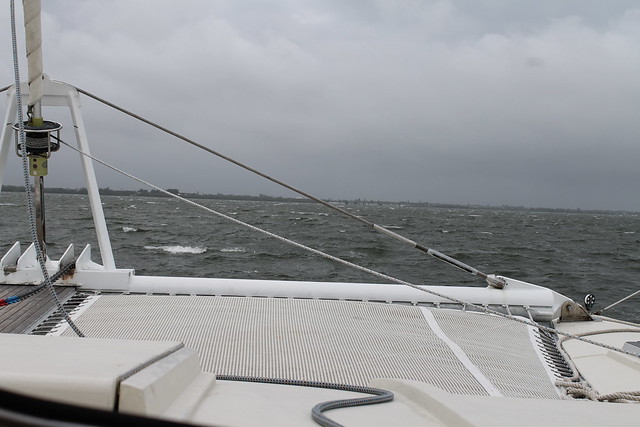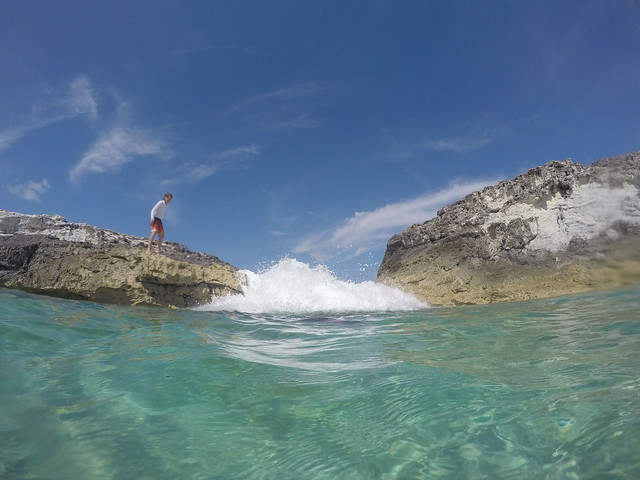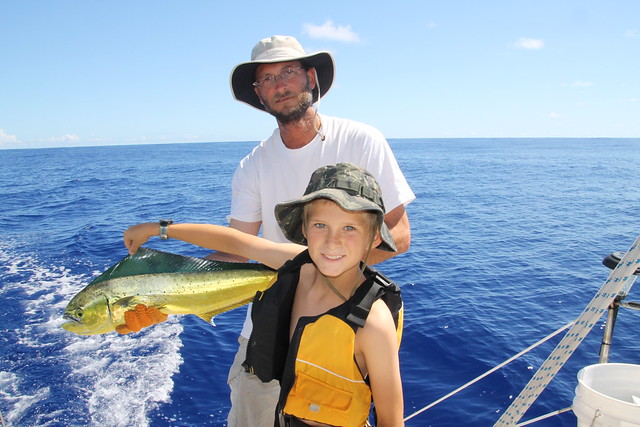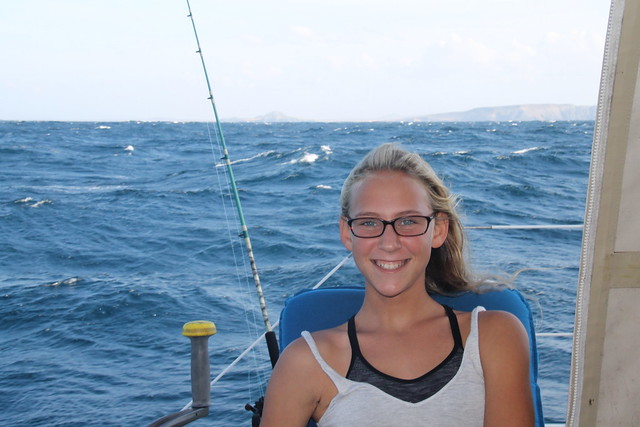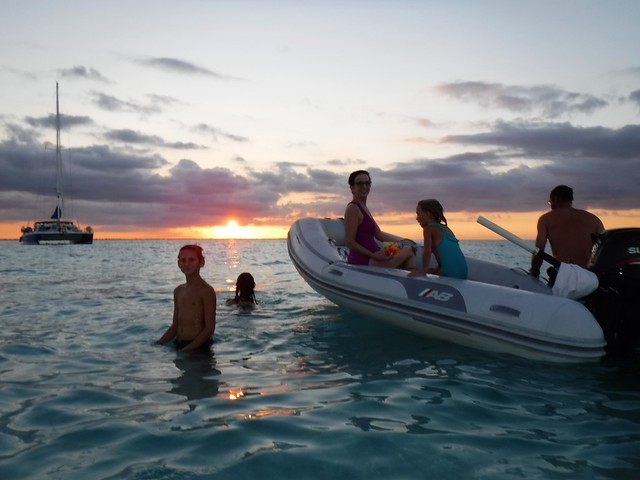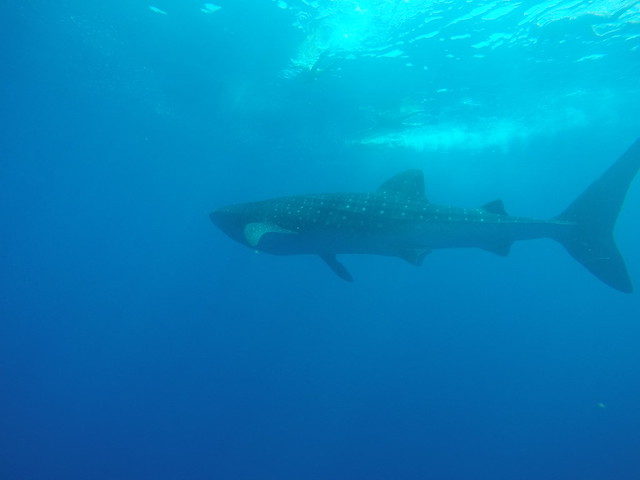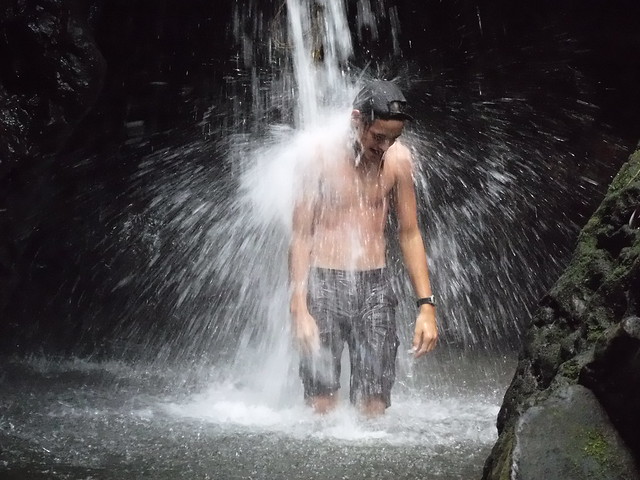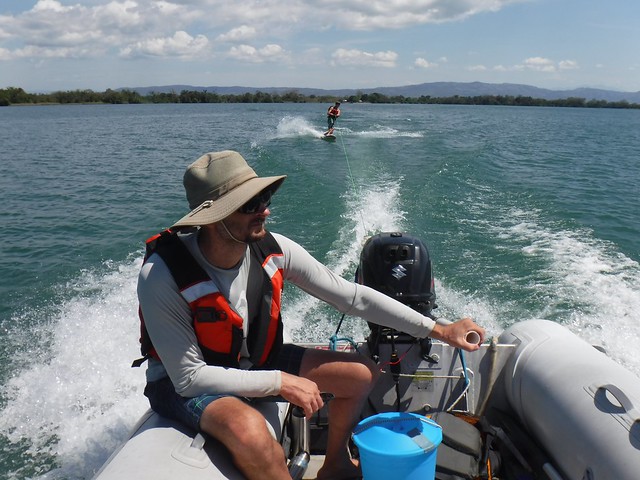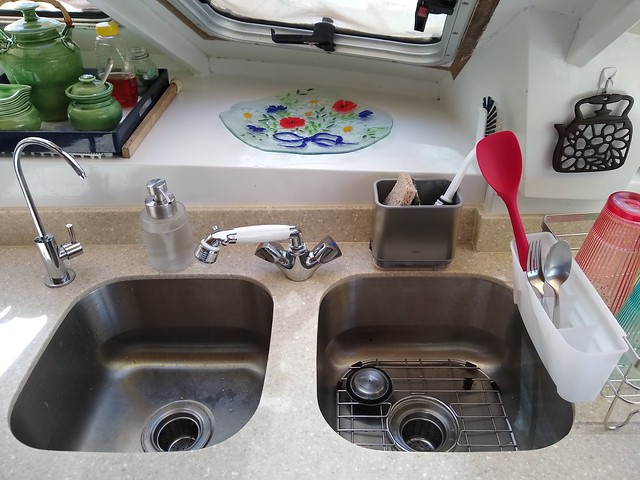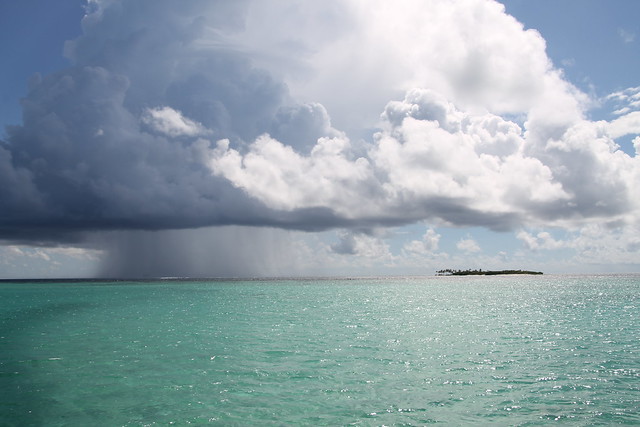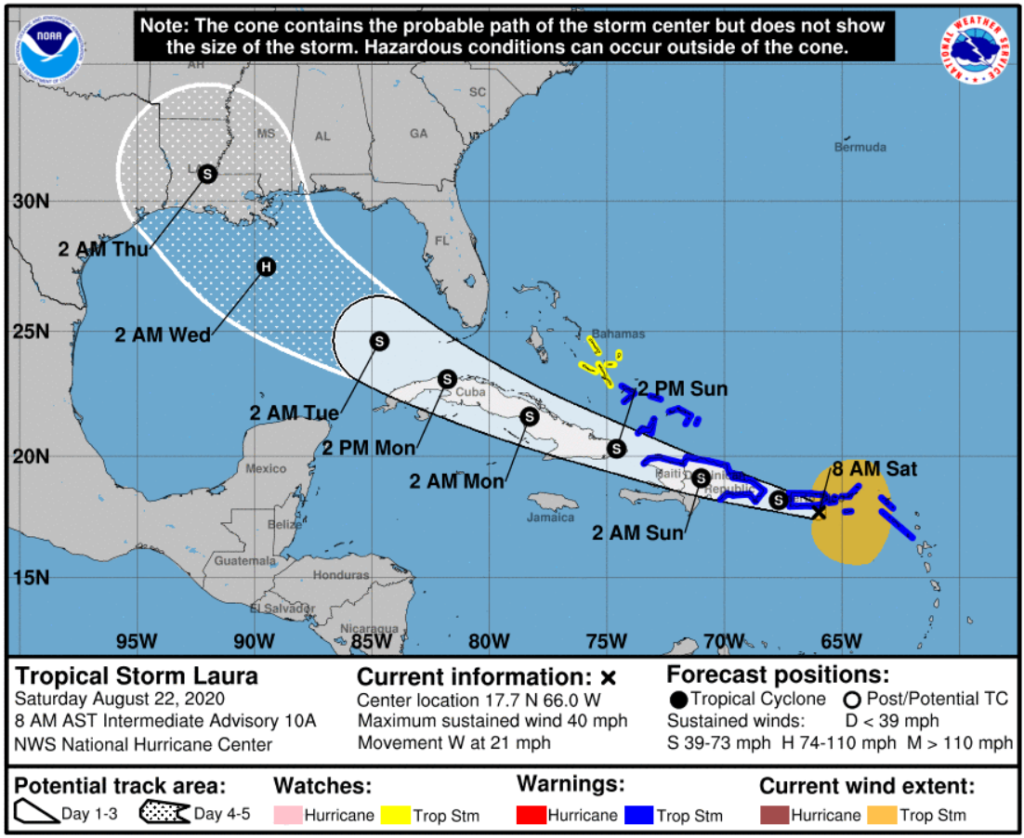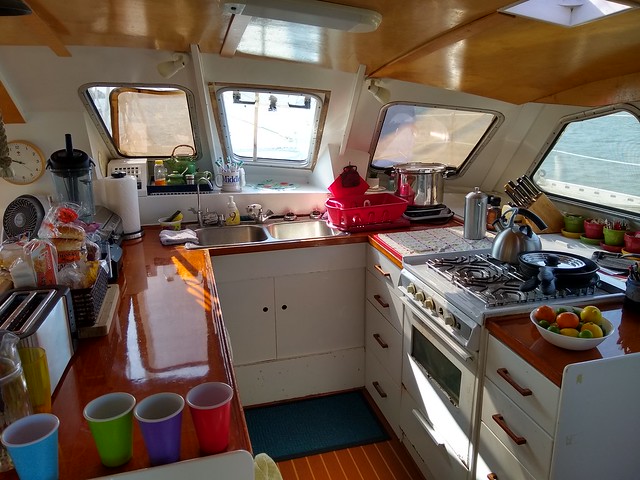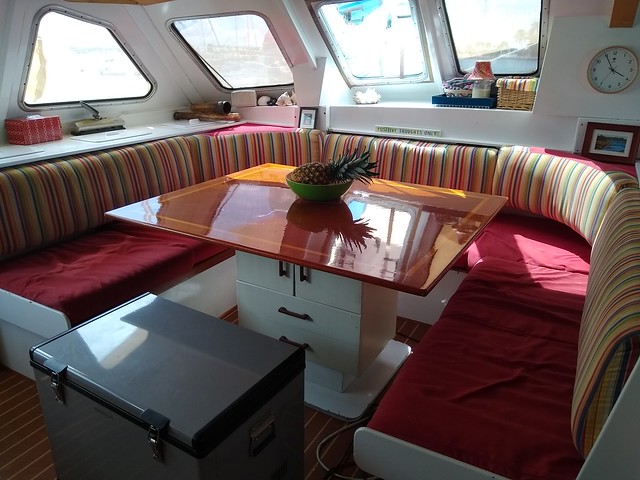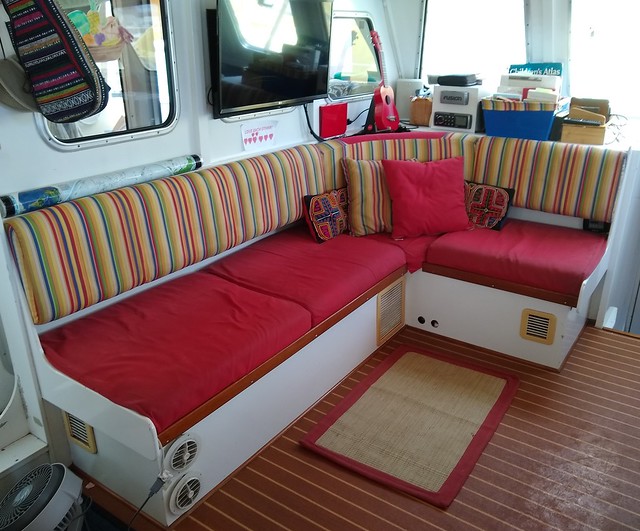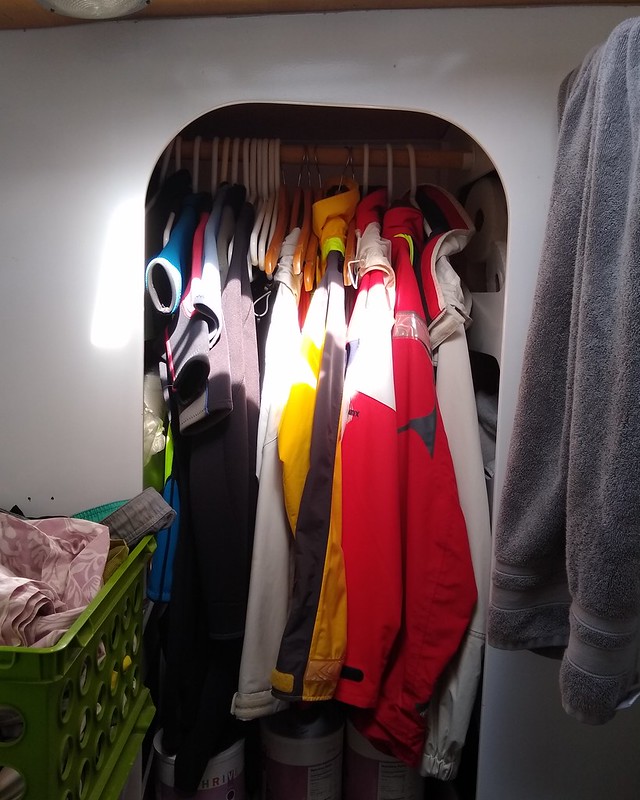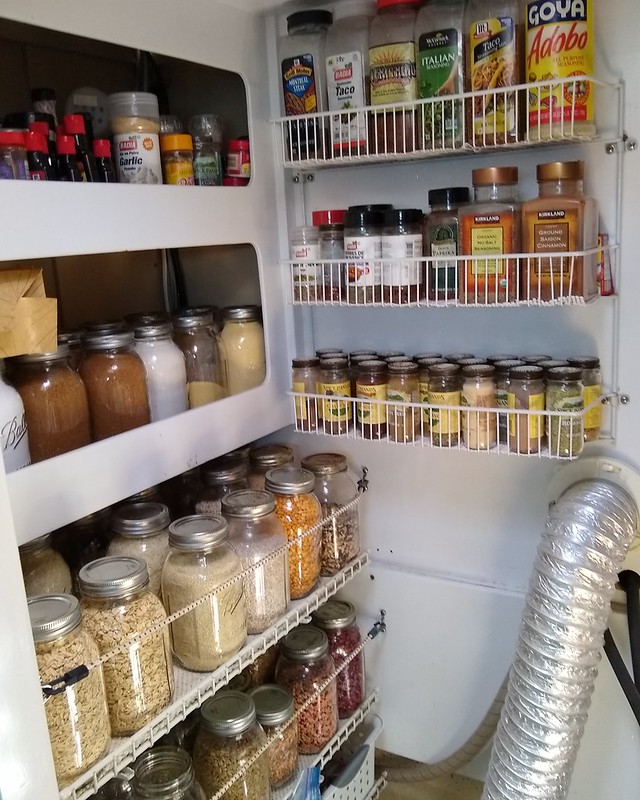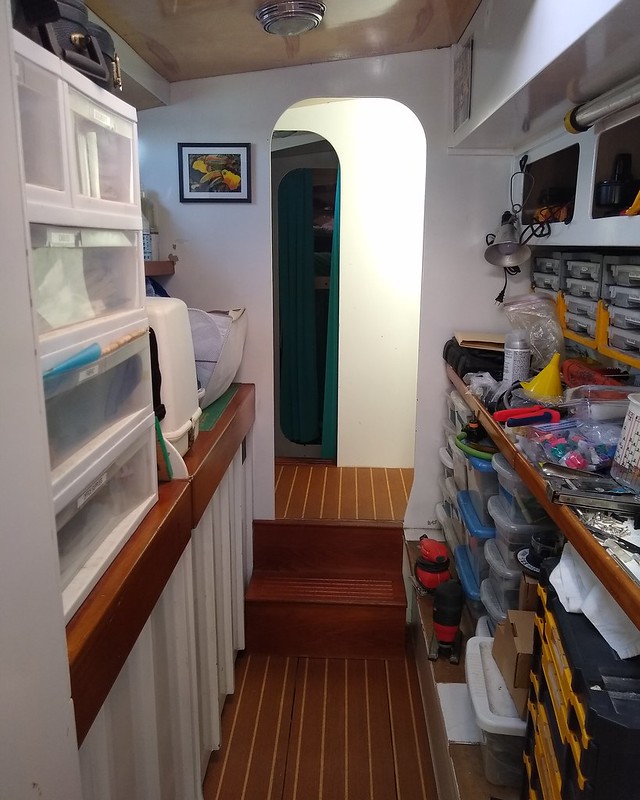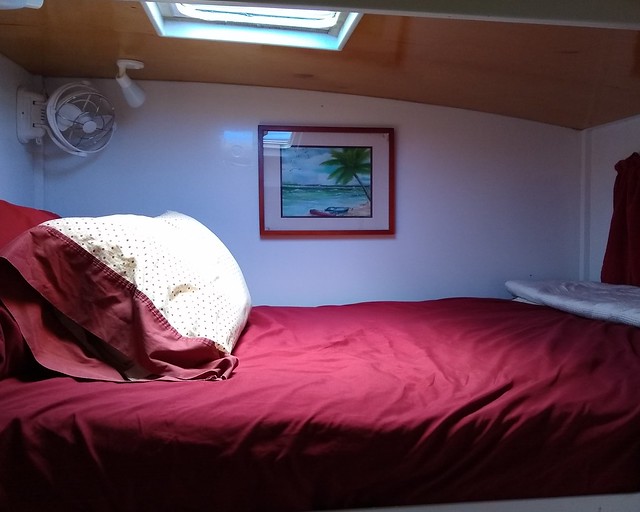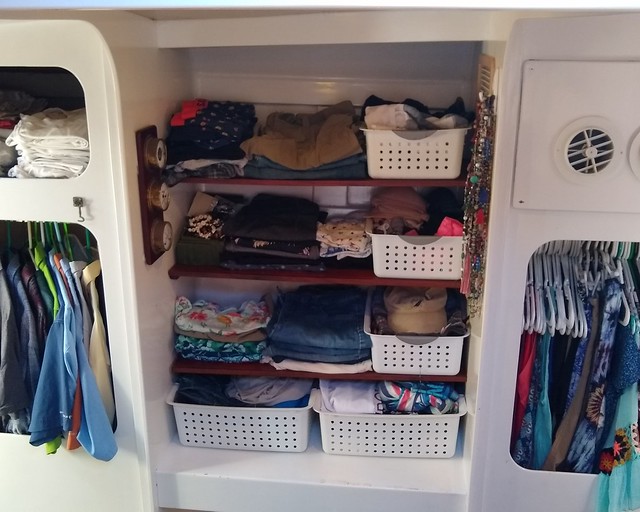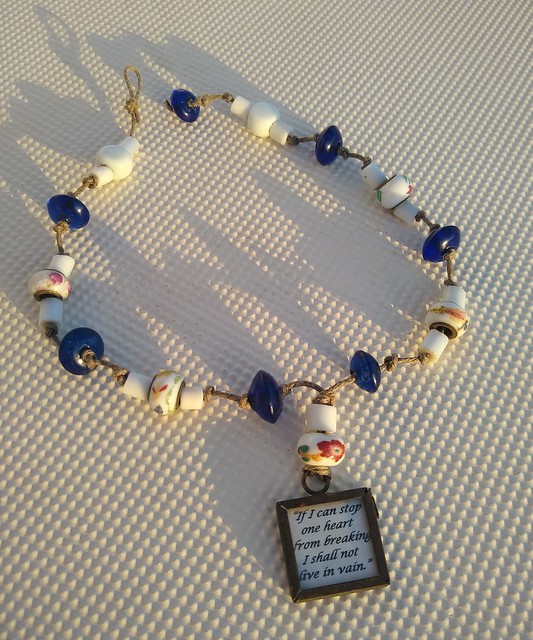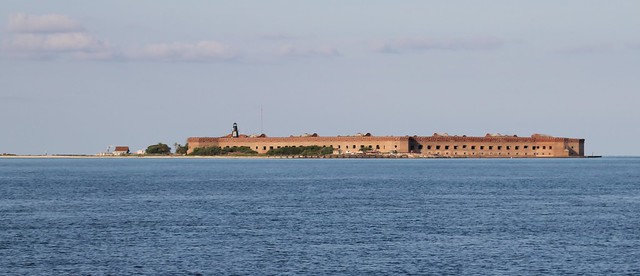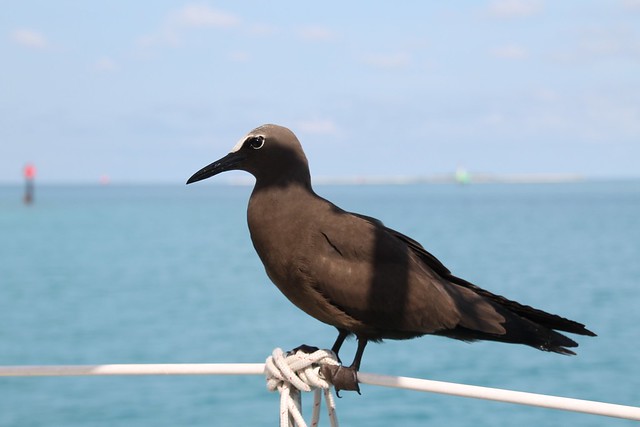We have prepared for and experienced several tropical storms in the twelve years we have owned Take Two, but never have we had to enact our hurricane plan, which involves “spiderwebbing” ourselves up inside a mangrove creek. That is, not until this week, when Tropical Storm Eta passed over the Florida Keys. Eta was the 29th tropical cyclone this year and passed this way after raking over Central America and flooding parts of Panama and Guatemala that we visited (2017-2019). News coming from friends in hard-hit areas is heart-wrenching and puts our encounter with the storm in perspective. We are feeling very thankful that we received the less-intense part of the storm, and also that we were able to find a quiet, secure place to practice our better-safe-than-sorry plan.
We have weathered a few named storms on the boat; some of those stories are documented here on the blog. We have been fortunate not to have sustained any storm damage yet, both by luck and preparation, though we have lost plenty of sleep. We prepped for our first tropical storm, Fay, in 2008, mere months after we had purchased the boat.
We were anchored during Tropical Storm Debbie in 2012, which lingered over the Tampa Bay area for five days and tested our recently-purchased Manson 80-pound anchor as well as our patience. Later that year, Superstorm Sandy passed by Ft. Pierce while we were tied to a dock there.
We experienced the beginning of Hurricane Matthew in 2016 while we were at a marina in Grenada, a storm for which we considered anchoring in a nearby mangrove bay, though we ultimately decided against it. Dealing with seasonal weather patterns is simply part of living on a boat—every year we make a plan for where we’ll be from June to November, and what we’ll do if a storm threatens.
Our best strategy for storm prep is avoidance. We prefer to be outside the “hurricane box” drawn by insurance companies, in places like the Chesapeake, Grenada, Panama, and Guatemala. When we can’t avoid the hurricane zone, which is sometimes the case since Florida is our home base, we watch the forecasts carefully and try to find a “safe” place to be in August and September especially. With every storm that presents reasonable threat, we make a plan that shifts with each change in direction and intensity. If we can’t avoid a storm, we take measures to protect the boat and her crew during the bad weather. For anything more than a Tropical Storm (winds more than 74 mph), we would put the boat in a place where we can reduce the risk of damage and then evacuate for our safety and comfort.
We were in Panama during the last storm that devastated the Florida Keys, Irma in 2017. The memory is still fresh here, and locals take hurricane warnings very seriously. Those who stayed on their boats or in their houses for that storm tell harrowing stories. The mooring balls in Boot Key Harbor, a place we have now spent three hurricane seasons, are screw-type hurricane-grade moorings, but the biggest threat is the “pinball effect” when a boat in the nearby anchorage drags anchor or if a boat breaks loose from a mooring and damages others as it drifts. While we can take proper precautions for our own boat, we can’t be sure of the security of other vessels. This is what prompted us to spend August and September on a seawall up a protected canal, and why we tied up in the mangroves for Eta.
One of the good things about our life afloat is the ability to move, and the self-sufficiency our boat provides. Sometimes we can get out of the way of bad weather, and sometimes we can secure our boat in a safe place despite it. We can’t eliminate risk, but we can mitigate it. Because we make our own power, we don’t have to worry about electrical outages. Because we float, we don’t have to worry about flooding. In fact, the rain provides free water as it runs from our hard top straight into our tanks.
We are feeling grateful a lot these days, for blessings large and small. At a time when there is so much bad news, we don’t take health, happiness, or protection from harm for granted. Seems like for every sigh of relief, there is also a sigh of sympathy: our thoughts and prayers are with those who have suffered so much this year.




